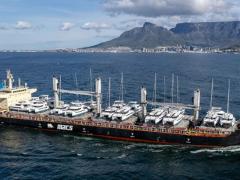The recent announcement by Maersk Line that it will no longer purchase containers with floors made of uncertified tropical hardwood will have a major impact on packaging and the way cargo is secured, says Barry Hugo, national sales manager of Cordstrap SA. “At the moment the flooring in containers is mostly wood and cargo is often secured by means of wooden blocks nailed into the floor. This will no longer be an option if the floors are made of plastic materials.” While Maersk Lines has publicly stated it will still purchase containers with timber floors if they come from sources employing responsible forestry practices, the line is seriously considering nonwood alternatives such as bamboo and even recycled plastic flooring. Hugo says being able to secure cargo properly remains a priority. “Damaged cargo drives up costs. Some people erroneously believe that because something is heavy it will not move or slide and that the weight itself is enough to secure the cargo. So either nothing is used, or exporters just nail a wooden block into the floor and the cargo is considered good to go. Unfortunately, this is often not enough and damages are commonplace.” According to Hugo the net result of alternative container floor materials will be a sharp increase in the use of friction-inducing materials, strapping/lashing and dunnage bags. “As we see less wood being used, we can no longer rely on the old way of securing cargo. With insurance costs rising and safety ever more in the spotlight, securing cargo according to best practice is vitally important.” Hugo says investing in a system that allows for proper cargo securing is the best decision to make. “The cost of certified securing materials is, in virtually all cases, a tiny fraction of the value of the goods being exported.”












